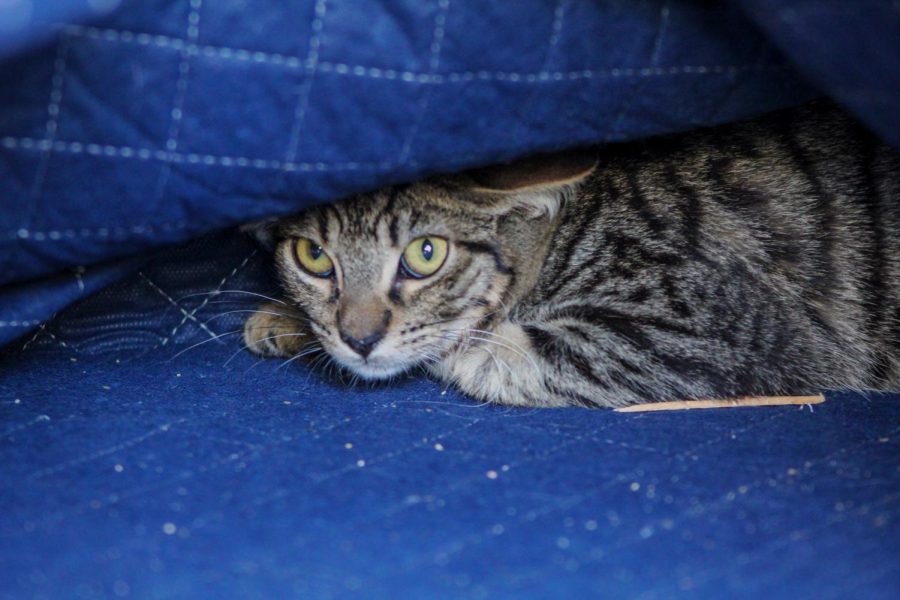Furry Friends Control Resident Rodents
In March, Director of Facilities Management Mark Jacobsen “hired” cats to keep Cal Lutheran rodent free. above is one of those cats hiding in the structure Jacobsen built for them.
September 17, 2019
California Lutheran University has introduced a new type of employee to campus: cats.
Over the past months, Director of Facilities Management Mark Jacobsen recruited feral and stray cats to help keep campus free of rodents.
Jacobsen said the cats have been introduced to areas on school grounds where they won’t bother students or faculty but where they can still access the areas with the most rodents.
The first two cats were introduced in March and now Cal Lutheran has a total of 14 cat employees.
The cats are an eco-friendly alternative to the rodenticides previously used on campus, said Jacobsen.
Jacobsen heard about the Ventura County Animal Services’ Working Whiskers Program from a friend. Jacobsen said this program allows interested parties to take cats that are next in line to be euthanized at the shelter and train them to hunt rodents. VCAS provides the cats as long as the ones utilizing the program provide “daily food and water, protection from the elements and long-term vet care,” according to their website.
“I researched online what a feral cat house would be, and I built one,” Jacobsen said. He continues to build and revamp the cat homes, or “cat condos.”
Even though the cats are constantly fed and cared for by Jacobsen, he said they still behave like feral cats, only briefly allowing him to pet them when he cleans their food bowls.
Recently, Jacobsen tried to house the cats in the backyard of an on-campus house, unaware that three students in the dorm were severely allergic to cats. After being informed, he immediately relocated the animals.
Sophomore Maya Fleming was one of the students in the house who is allergic to cats. Despite the incident, she has an open mindset about the program.
“I don’t mind the program in general, as long as I know they are doing a decent job of cleaning up after [the cats] and keeping them away from students… I don’t want rats, but I care about my life a lot more than I care about a rat,” Fleming said.
Despite this, Jacobsen believes the cats pose no threat. He said since they are feral, they tend to avoid people and only come out at night.
Jacobsen put the first “cat condo” behind Ullman Commons, where rats are most often seen due to the exporting and importing of food.
He said he immediately saw a change.
“Our rodent incidents just completely went away,” Jacobsen said. “It [seems] to be working really well.”
Oliver Greene, the facilities work control assistant talked about how invested Jacobsen has been.
“[The Facilities staff] was initially really surprised, but Jacobsen seems super excited about it. It was his own personal project; he’s been in the driver’s seat the whole way,” Greene said.
Jacobsen said he used to consider himself a “dog person” but after these months with the cats, he admitted he has grown rather fond of them. He even adopted two cats for his family.
“I have now become one of those people that I used to roll my eyes at when they were talking about their pets,” Jacobsen said.
Facilities has put up signs notifying students that the cats are campus employees, but the cats aren’t often seen by students, staff and faculty.
Facilities does occasionally get phone calls to the office regarding the cats.
“Every once in a while, you’ll get a call from somebody and they are like ‘um, hi, I think there’s a cat on campus,” Greene said. “And it’s like ‘oh no that’s the Cal Lutheran cat.’”




















